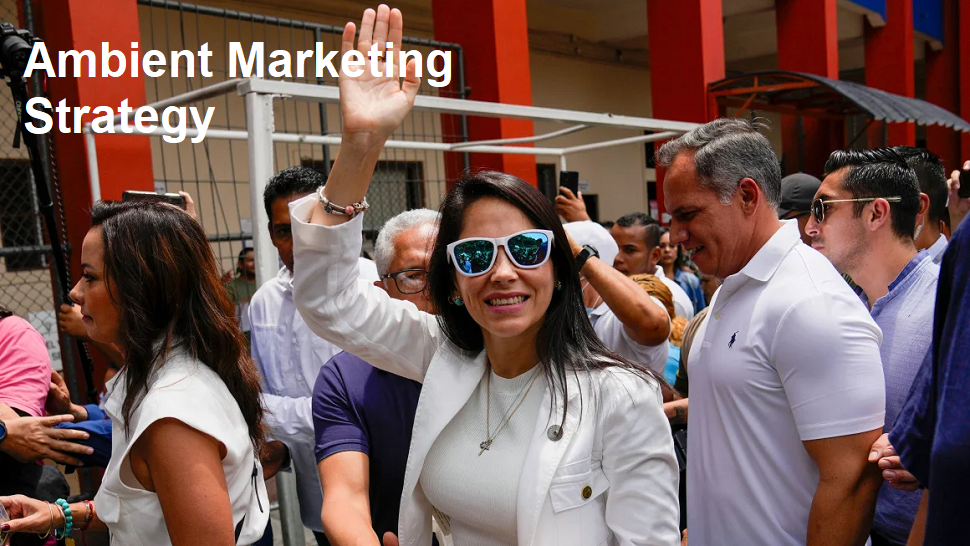What is Ambient Marketing?
In today’s competitive modern business ecosystem, brands must find innovative ways to attract the attention of their product target audience. One strategy often used by modern businesses in recent years is ambient marketing.
Ambient marketing is a form of advertising that aims to create unique and immersive experiences for target consumers in their everyday environments. Unlike traditional forms of marketing, which rely on explicit promotional messages, ambient marketing seeks to persuade consumers through subtle and creative means. This marketing method blends perfectly with the surrounding environment, making ambient marketing a powerful tool for attracting people’s attention and evoking audience emotions.
The beauty of ambient marketing lies in the ability of these marketing methods to surprise and delight their consumers. By utilizing non-traditional advertising spaces and unconventional media, a brand using this marketing method can create a memorable experience that resonates with audiences long after they first meet them. Whether in the form of cleverly placed murals on street corners or interactive installations in public spaces, ambient marketing has proven to be able to leave a lasting impression on the public.
Benefits of Ambient Marketing.
Ambient marketing can provide many benefits for brands looking to increase their product presence in a competitive market. Here are some compelling reasons why companies should consider incorporating ambient marketing into their product or brand marketing strategy, namely:
Increased brand awareness.
Ambient marketing has the advantage of generating buzz and getting people talking about the brand. By creating unique and memorable experiences, companies can increase their brand visibility, thereby differentiating them from competitors.
Increased consumer engagement.
Ambient marketing seeks to attract consumer attention in a different way than traditional advertising. By integrating a company’s brand message into the everyday environment of the people targeted by the product, companies can create a deeper level of engagement with their consumers and forge stronger relationships with their customers.
Cost effective.
Compared to traditional advertising channels, ambient marketing turns out to be cheaper. With a little creativity and strategic thinking from marketers, companies can make a big impact without having to spend as much money as they would in traditional advertising.
Opportunities for viral marketing.
In today’s digital era, ambient marketing has a big opportunity to go viral. When people discover a unique and captivating experience from an ambient marketing campaign, they tend to share it on social media platforms, thereby generating organic exposure for the brand of the company carrying out the ambient marketing.
Ambient Marketing Statistics.
If you’re still not convinced about the power of ambient marketing, take a look at these interesting statistics:
– According to a Nielsen study, ambient advertising has a 19% higher engagement rate than traditional advertising methods.
– Research conducted by the Outdoor Advertising Association of America found that 90% of people who see outdoor advertising take action, such as visiting a website or looking for more information about the brand.
– A survey conducted by Experian revealed that 70% of consumers are more likely to purchase products or services from brands that engage them with a personalized experience.
– In a study conducted by Branding Strategy Insider, 75% of respondents said that ambient marketing made them feel more positive about the advertised brand.
These statistics highlight the effectiveness of ambient marketing in capturing consumer attention and driving action.
Ambient Marketing Strategy.
To successfully implement ambient marketing, brand marketers need to develop a mature strategy. Here are some important steps they can consider in their ambient marketing campaign, namely:
Determine marketing goals.
Marketers can start by clearly defining their marketing goals. What do marketers want to achieve through this ambient marketing campaign? Is it increased brand awareness, consumer engagement, or both? Understanding marketers’ goals can help them adjust their ambient marketing strategies.
Get to know the brand’s audience.
Marketers must research and understand their target audience. What are the target’s interests, behaviors, and preferences? By understanding the audience of an ambient marketing campaign, marketers can create experiences that resonate with them on a deeper level.
Be creative and innovative.
Ambient marketing is growing rapidly based on creativity and innovation in the world of marketing. Marketers must be able to think outside the box and they must explore unconventional advertising spaces and media. They need to consider how they can seamlessly integrate the brand message into the environment to create a memorable experience for those who view it.
Measure and analyze.
As with any marketing strategy, marketers must measure the success of their ambient marketing campaigns. Marketers should track key metrics such as brand mentions, engagement rates, and sales to measure the effectiveness of their marketing efforts. Use data to refine your ambient marketing strategy and optimize future marketing campaigns.
Examples of Successful Ambient Marketing Campaigns.
To further illustrate the power and success of ambient marketing, I provide several examples of successful ambient marketing campaigns:
Coca-Cola Happiness Machine.
Coca-Cola installed their drink vending machines in busy campus areas. When students inserted coins, the machine not only dispensed a bottle of Coke but also a series of unexpected surprises, including pizza and even a bouquet of flowers for the buyer. The campaign created a buzz on the campus where the marketing campaign took place and generated significant online engagement.
Subway Nap Pod IKEA.
In order to promote the launch of its new mattress line, IKEA carried out an ambient marketing campaign by turning subway stations in Japan into comfortable nap zones. Passengers at the subway station can take a break from their busy lives and feel the comfort of an IKEA mattress. This marketing campaign effectively shows IKEA’s commitment as a brand that can provide a good night’s sleep.
Nike’s Run the City.
Global footwear company Nike, created an interactive outdoor campaign that turns the streets of big cities into running trails. Using augmented reality technology, runners wearing Nike shoes can compete with virtual avatars and track their progress in real-time. This ambient marketing campaign encourages people to actively exercise and shows Nike’s commitment to fitness and innovation.











